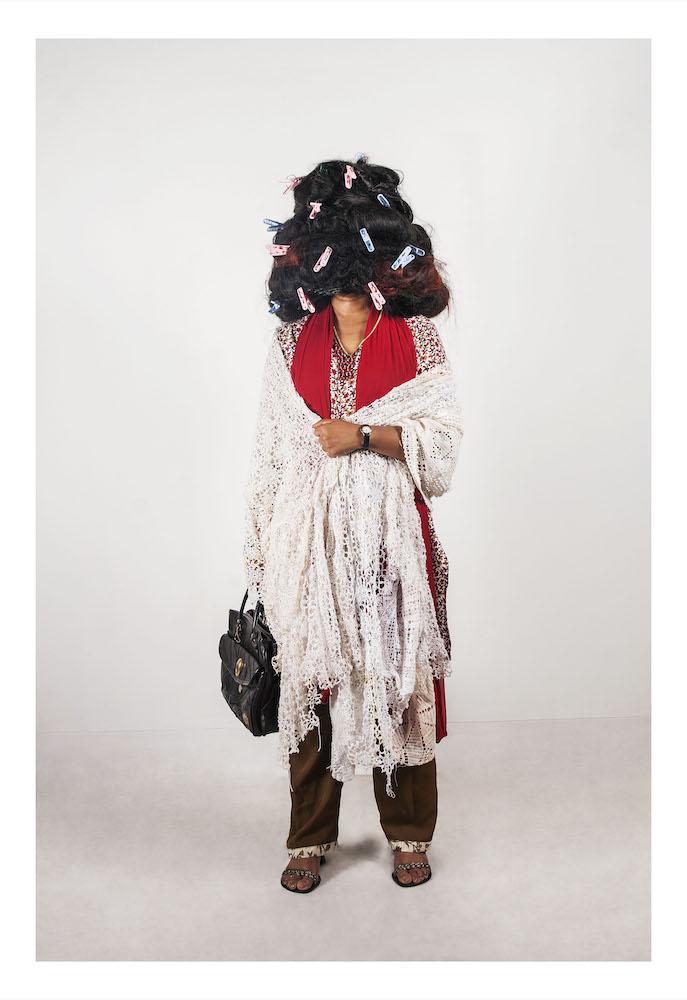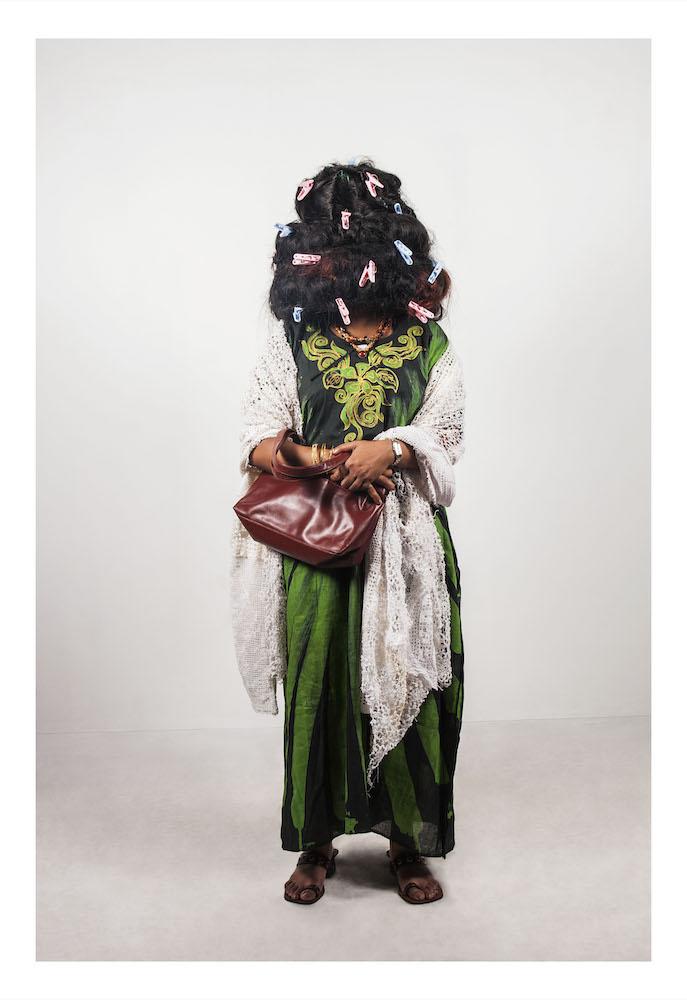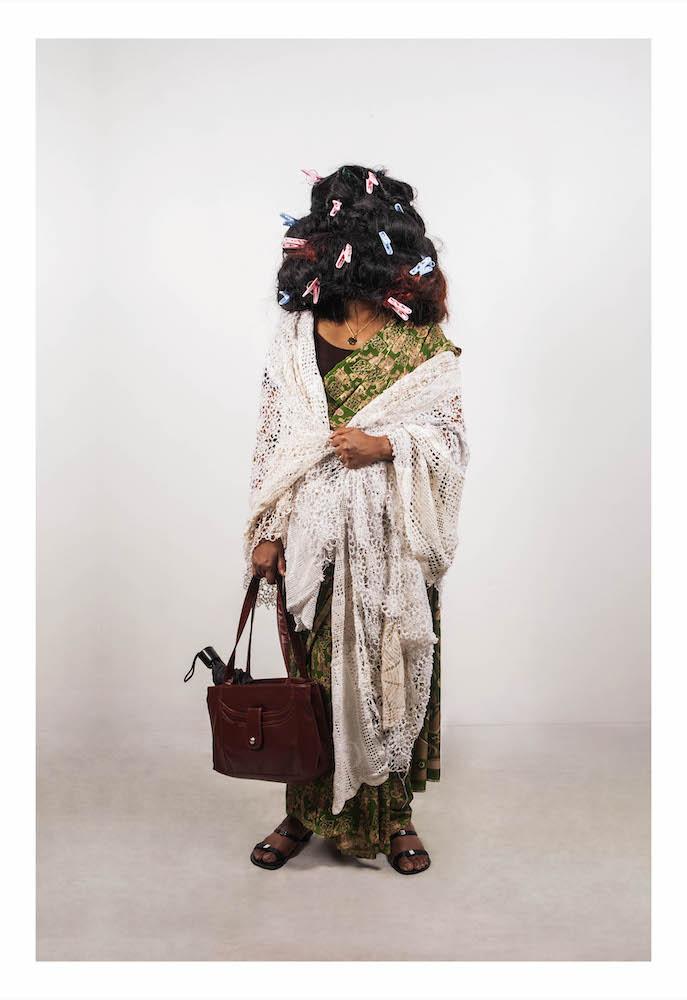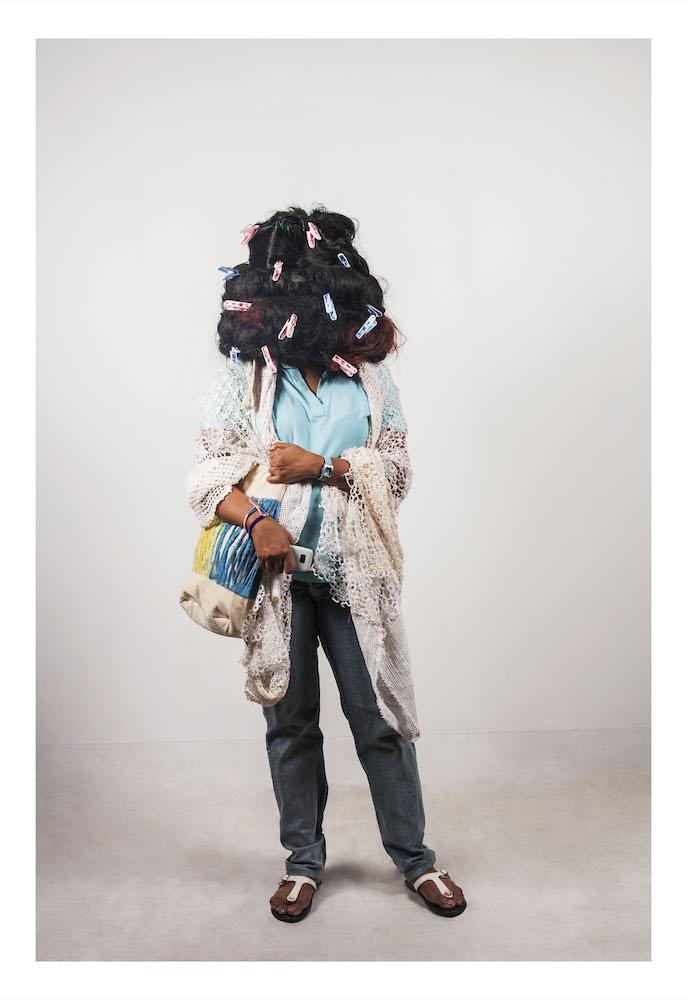On Postcolonial Sartorial Trends: Civilizing Serendib by Anoli Perera
In Sri Lankan artist Anoli Perera’s I Let My Hair Loose: Protest Series (2010), anonymous, often faceless women dressed in the Kandyan sari as well as dresses of colonial origin are depicted in monochrome images. The Kandyan sari has Nayakkar origins and has been used as a tool for furthering a Sinhala Buddhist nationalist identity by the country as a means to detach itself from centuries of colonial existence. Thus, through sartorial choices, the artist investigates the politics of the male gaze with specific reference to the forms of Sri Lankan women’s clothing that gained prominence within nationalistic thinking, sparked by the independence movement against the British in the 1930s.
Made in the same year, Civilizing Serendib (2010) can be seen as an extension of I Let My Hair Loose: Protest Series. However, in Civilizing Serendib, the clothing is notably different. Performing herself, Perera is dressed as a contemporary Sri Lankan woman. Here, her attire comprises batik kaftans, Indian-style sari, trousers, and skirts, which are perhaps modernised counterparts of what is depicted in I Let My Hair Loose: Protest Series. The title itself reminds one of the manners in which attempts at “civilisation” by colonial powers left an undeniable mark in Sri Lanka. The white shawl in all the photographs in Civilizing Serendib also reminds one of the Victorian values of coyness and modesty which were expected of women in many colonies, including Sri Lanka. The title of the series further reminds one of such attempts of civilisation: over centuries, the country has been called a variety of names. “Serendib” is one of the more notable terms of Arabic and Persian origin that was used to refer to Sri Lanka during pre-colonial times. It was soon replaced by “Ceylon,” which dates back to the Arabic term “Saheelan” that was used during colonial times.
Nira Wickramasinghe, in her book Dressing the Colonised Body: Politics, Clothing, and Identity in Sri Lanka (2003), describes the dress as a “social artefact” that is a mode of “…non-verbal communication, if not a language, at least a system of signification.” Civilizing Serendib can also be understood in this sense, playing with how clothing can signify cultural identity, in relation to women in contemporary Sri Lanka. To what extent decolonising clothing has occurred in Sri Lanka is to be questioned through the series as Perera subtly comments on the impact of colonial “civilisation” on everyday clothing in Sri Lanka even in the twenty-first-century. Despite the decades that have passed since independence, these items of clothing popularised by colonial powers continue to be significant in the country. The vibrant colours of the photographs indicate to us that the clothing belongs to the present, while being “artefacts” born of colonial histories.
What remains unchanged between the ancestral clothing in I Let My Hair Loose: Protest Series and Civilizing Serendib is the protest against the male gaze. The women continue to have their faces covered by unruly hair, just like in I Let My Hair Loose: Protest Series, signalling that despite attempts at decolonising sartorial trends, the male gaze continues to indirectly impact women and their clothing in Sri Lanka. Women’s bodies remain sexualised and under surveillance at all times.
To read more about Anoli Perera’s I Let My Hair Loose: Protest Series, please click here.
To read more about the use of sartorial choices to critique the idea of the gaze, please click here and here.
All images from the series Civilizing Serendib by Anoli Perera. Sri Lanka, 2010. Images courtesy of the artist.









